Does your period pain make you question your existence every month? Beyond painkillers and acupuncture, Traditional Chinese Medicine (TCM) is also an important option for managing menstrual cramps. In fact, a growing number of studies in recent years have confirmed its effectiveness.Traditional Chinese Medicine is not just ancient wisdom — it's also backed by modern evidence.Curious about which Chinese herbs can relieve menstrual cramps—and whether they’re safe? You’ll find the answers right here in this article!
Are Traditional Chinese Medicine formulas supported by science? Let’s find out.
Actually, yes! Several Traditional Chinese Medicine formulas—such as Si Wu Tang and Xue Fu Zhu Yu Tang—have been the focus of numerous studies published in high-impact journals in recent years. These formulas have shown effectiveness in treating dysmenorrhea (menstrual pain), with results that rival those of conventional painkillers.
Si Wu Tang
Research Findings: In a systematic review of 38 randomized clinical trials involving nearly 4,000 women, Si Wu Tang–based formulas were found to be more effective than conventional painkillers in reducing menstrual pain and improving treatment outcomes. Moreover, they were associated with fewer side effects, making them a safer and more reassuring option for many patients.
Fennel, Cinnamon, and Ginger
What are these? These common kitchen herbs are also widely used in Traditional Chinese Medicine to warm the meridians, relieve pain, and alleviate cold-type menstrual cramps.
研究發現:一篇系統性回顧彙整了12篇隨機臨床試驗,發現這些草藥與西藥止痛效果相近,明顯優於安慰劑;且副作用少,是不少女性偏好的天然選擇。
Xue Fu Zhu Yu Tang
A multi-center, double-blind randomized controlled trial (RCT) is currently underway, aiming to enroll 248 women to evaluate the formula’s effectiveness in alleviating menstrual pain. If you’ve heard of these formulas before, please don’t rush to self-prescribe. It’s important to consult a licensed TCM practitioner first to ensure safe and appropriate use—improper use may lead to discomfort or unwanted effects.
Bottom line? TCM has scientific support—and it’s worth your trust.
Menstrual pain isn’t something you just have to “tough out.” If your symptoms are frequent or interfere with daily life, it’s best to seek professional medical advice.
Traditional Chinese Medicine also emphasizes “treating the right pattern and constitution.” So please, don’t self-prescribe or take herbal remedies without proper guidance.
If you're looking for a natural, long-term, and gentle solution for menstrual pain, Traditional Chinese Medicine might be a path worth exploring.
Reference
Frontiers in Endocrinology (2025). TCM strategies in primary dysmenorrhea (Shaofu, Siwu etc). frontiersin.org
Geng Li et al. (2020). Chinese herbal formula Siwutang for treating primary dysmenorrhea: A systematic review and meta-analysis. Maturitas, 138:26–35. link-1
Yeh LL et al. (2007). Four‑Agents‑Decoction (Si Wu Tang) in primary dysmenorrhea: a pilot RCT. PLOS ONE. link-2
Shahrahmani H et al. (2021). Fennel for Reducing Pain in Primary Dysmenorrhea: A Systematic Review and Meta-Analysis of Randomized Controlled Trials J Complement Integr Med. link-3
Xu Y et al. (2020). Efficacy of cinnamon/fennel/ginger for primary dysmenorrhea. J Int Med Res. link-4










